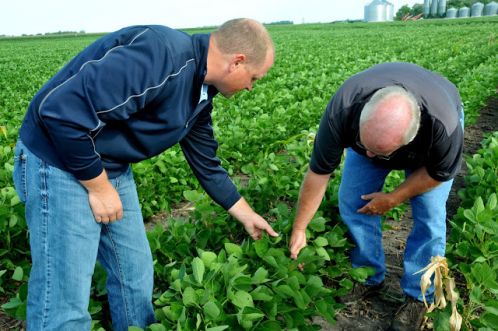Don’t Base 2014 Seed Decisions on the 2013 Season

Happy New Year! 2014 seems to be off to a good start with high prices and the outlook of a perfect growing season. Okay – so those predictions may be a bit far-fetched! However, that was the outlook many farmers had just one short year ago, at the beginning of 2013.
Hindsight is always 20-20. Looking back, you may be one of those that wished you had locked in more bushels early at that higher price. And for most growers, the weather just didn’t cooperate in 2013.
That’s the problem with basing our decisions on our short-term memories of the past growing season. Recent trends have identified the odd-numbered years (2009, 2011, and 2013) to be tougher than normal, with good production occurring during the even-numbered years. Hopefully that means that the year ahead will be profitable for you!
At Peterson Farms Seed, we evaluate a multitude of genetics – both corn and soybeans. It is imperative to evaluate multiple year data from numerous locations. When I compare two products, it is ideal to have more than 10 head-to-head comparisons from at least two years. This provides the best indication of how genetics may differ among varieties. Of course, some varieties perform better on certain types of ground due to agronomic traits (phytophthora, wet feet tolerance, SCN, IDC, salt tolerance), but I sort out those differences during the summer while walking strip plots and replicated test locations.
Growing conditions in the upper plains are varied and unpredictable – more so than in the central Midwest. 2012 was dry throughout the year. 2013 started wet, but turned dry throughout the growing season. Corn hybrids and soybean varieties respond quite differently to those two situations. If you based your 2013 decisions on 2012 performance, you probably placed some products incorrectly, leading to disease issues or poor performance.
The solution? Place products that perform well year-after-year on the majority of your acres. Then, take some chances with newer genetics to “knock out a home run” on highly productive ground. With the high degree of variability our region experiences, this is a successful strategy to adopt.
No doubt, you will be approached by a seed salesman this winter, showing how well a specific product performed in a single plot. Be sure you question its performance in multiple locations (even if those locations aren’t close to home), as well as ask for the product’s 2012 data.
With the amount of money you have tied up in proper variety and hybrid selection, it’s important to base your decisions on data from multiple years.
Wishing you a successful and prosperous New Year!



